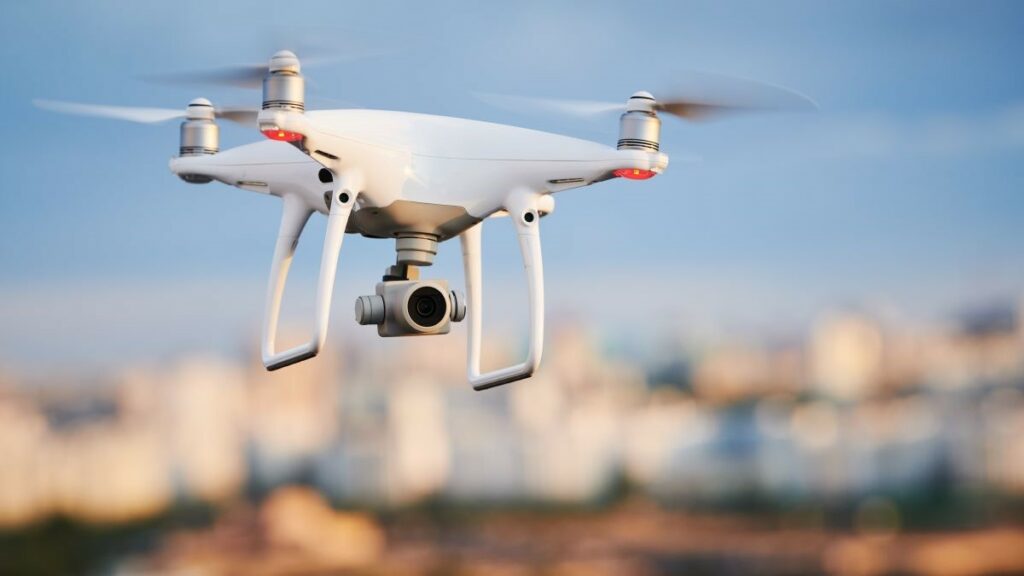Featured image by Dmitry Kalinovsky
The advent of autonomous drone technology marks a significant milestone in the evolution of crewless aerial vehicles (UAVs). Central to this advancement is the emergence of innovative docking technology, exemplified by systems such as Skydio Dock. This technology is transforming the landscape of drone operations, enabling drones to land, charge, and launch autonomously, enhancing their independence and utility. This article explores the intricacies of autonomous drone docking technology, its current applications, and the potential it holds for the future of autonomous flight.
The Concept of Autonomous Drone Docking
Autonomous drone docking represents a pivotal development in UAV technology. This system allows drones to autonomously land at a docking station. There, they can recharge and transfer data before launching again. This autonomy is crucial for extended and repetitive drone missions, enabling continuous operation without human intervention. Autonomous docking technology thus extends the functional capabilities of drones. It also opens up new possibilities for their use in various fields, from environmental monitoring to emergency response. Implementing such technology signifies a shift toward more resilient, efficient, and independent drone operations.
Advancements in Docking Station Design
In autonomous drones, the design of docking stations plays a fundamental role. Contemporary docking stations are not mere resting spots. Instead, they are equipped with sophisticated features such as automated charging systems, secure drone housing, and even climate control mechanisms to protect drones under harsh weather conditions. The adaptability of these stations is also a key factor. For example, some are designed for portability to support drones in remote or changing locations. This evolution in docking station design and technology reflects the growing demand for drones capable of enduring long-duration missions and operating in diverse and challenging environments.
Enhancing Drone Battery Life and Efficiency
A critical aspect of autonomous drone operation is managing battery life and efficiency. Drone docking technology addresses this challenge head-on by offering quick and efficient charging solutions. With advancements in docking station technology, drones can now recharge faster. This significantly reduces downtime and enhances overall operational efficiency. This improvement in battery management is crucial, especially for missions requiring long-term endurance. It ensures that drones can reliably perform continuous surveillance or extensive area mapping tasks. This marks a significant step forward in autonomous drone capabilities.
Integration with Flight Control Systems
The seamless integration of docking stations with the technology of drone flight control systems is essential for the success of autonomous operations. This integration involves sophisticated algorithms and software that enable precise communication between drones and their docking stations. Such systems ensure accurate landings, efficient charging, and timely take-offs. Additionally, they can monitor drone health, assess battery levels, and signal maintenance requirements. This level of integration is critical to the reliable and efficient operation of autonomous drones. Basically, it makes them more competent and responsive to operational demands.
Applications of Docking Technology in Various Industries
Autonomous drone docking technology finds its utility in a multitude of industries. For example, in agriculture, drones equipped with this technology can continuously monitor crop health. Then they return to their docking stations for recharging and data upload, enabling farmers to make timely, informed decisions. In logistics and delivery, these drones can revolutionize the industry by allowing round-the-clock operations. They also facilitate efficient package handling and delivery. Emergency response and public safety also stand to benefit immensely. Autonomous drones can provide persistent surveillance and rapid response in critical situations, such as natural disasters or search-and-rescue operations. The adaptability of this technology to different industrial needs highlights its potential to become an integral part of various sectors, offering innovative, efficient, and practical solutions.
RELATED ARTICLE: CUBESAT CAMERAS: A REVOLUTION IN SPACE TECHNOLOGY
Challenges and Future Developments in Docking Technology
Despite the promising advancements, the path to technology that would allow fully autonomous drone docking is challenging. Key among these is ensuring precision in docking under diverse environmental conditions, further improving battery technology for longer flight durations, and securing data transmission against cyber threats. Future developments will likely focus on these areas. In fact, research continues into more efficient and faster-charging batteries, robust materials capable of withstanding extreme weather for docking stations, and enhanced cybersecurity measures. Advancements and evolution in artificial intelligence (AI) and machine learning (ML) could lead to more autonomous decision-making capabilities in drones. This is because they reduce the need for human intervention and pave the way for more complex and independent drone operations.
RELATED ARTICLE: TECHNOLOGY AND ITS ROLE IN REDUCING COSTS FOR SMALL BUSINESSES
Conclusion
In conclusion, the development of autonomous docking technologies such as those from Skydio Dock is playing a crucial role in advancing the capabilities of drones. This technology is not only pushing the boundaries of what drones can achieve but is also redefining their role across various industries. As these technologies evolve, they promise to usher in a new era of drone autonomy characterized by increased efficiency, reliability, and versatility. The future of autonomous flight, bolstered by advanced docking technology, is set to transform the landscape of crewless aerial operations, making drones an indispensable tool in the technological arsenal of the modern world.
RELATED ARTICLE: TECHNOLOGY OR MONEY: WHICH ONE MAKES THE WORLD GO ROUND?
